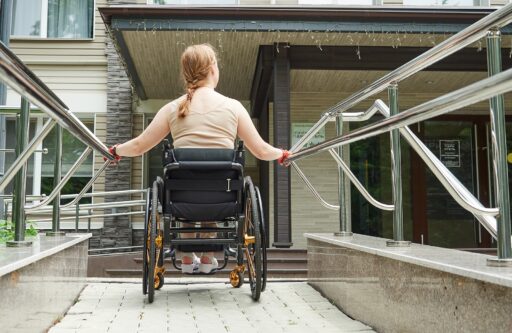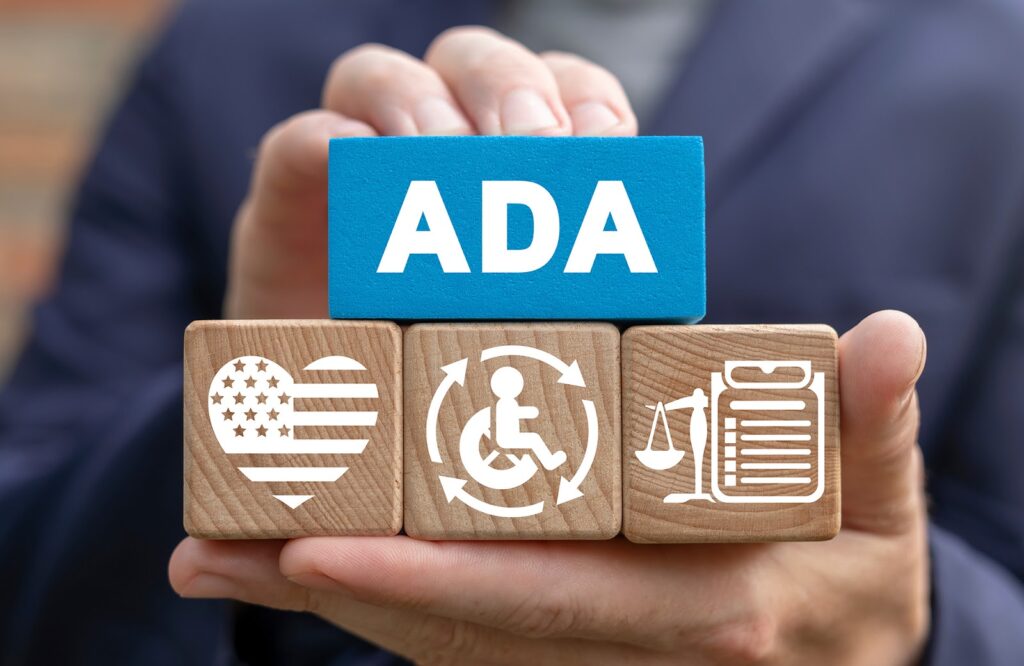Understanding ADA compliance isn’t always easy for HOA boards. But if your community has shared spaces or receives accommodation requests from residents with disabilities, it’s something you can’t afford to overlook. Knowing when federal accessibility laws apply can help your board support residents fairly while staying in line with the law.
What Is the ADA and When Does It Apply to HOAs?
The Americans with Disabilities Act (ADA) is a federal law passed in 1990 to prevent discrimination against people with disabilities. It covers access to public spaces, employment, transportation, and services. But not every HOA facility falls under its scope.
The ADA generally applies when a part of your community is used by the public. For example, if your clubhouse or pool is rented to outside groups or used for events that are advertised publicly, those areas may need to meet ADA standards. This includes things like wheelchair-accessible entrances, ramps, restrooms, and parking.
Private areas, like residential sidewalks or parks that are only for residents and their guests, aren’t usually covered by the ADA. Instead, these spaces fall under the Fair Housing Act (FHA), which has its own set of accessibility rules focused on housing.
That said, the line between private and public can blur quickly. If your community center doubles as a polling place or hosts neighborhood events open to outsiders, parts of it may be legally required to meet ADA guidelines.
It’s smart to review how your shared spaces are used—not just by residents, but by the public, too. That can help you figure out where ADA compliance is necessary and where FHA rules apply instead.
Understanding Disability Accommodations Under the Fair Housing Act
Even if the ADA doesn’t fully apply to your HOA, you’re still responsible for complying with the FHA, which requires “reasonable accommodations” for residents with disabilities. This is where many boards run into confusion.
A resident might ask to install a wheelchair ramp, modify a walkway, or keep a service animal even though your rules don’t typically allow it. The law expects HOAs to consider these requests seriously and, in most cases, approve them—unless doing so would impose a major burden on the community or change the nature of the services offered.
That doesn’t mean HOAs must approve every request without limits. If a proposed modification would be prohibitively expensive or structurally impossible, the board can deny it, but not without documenting the reasons and ideally speaking with legal counsel.
The bottom line? Reasonable accommodations aren’t optional. They’re a legal obligation, and they help ensure every resident can use and enjoy their home just like anyone else.
Common Areas Where ADA Compliance Comes Into Play
Some parts of your HOA are more likely to raise accessibility concerns than others, especially if they’re used by both residents and guests. Below are some of the most common areas where compliance questions come up:.
HOA Wheelchair Ramps and Accessible Routes

Wheelchair ramps are one of the most frequently requested accommodations. If the ramp is for a private home, it’s generally up to the homeowner to install and maintain it. But the board can’t unreasonably deny permission, even if the ramp doesn’t match the neighborhood’s aesthetics.
For shared spaces like the clubhouse or pool, wheelchair ramps are often required under the ADA, especially if the facility is open to the public or used by residents with mobility issues.
Beyond ramps, your board should also be thinking about the condition of sidewalks, parking lots, doorways, and any other routes residents or guests might take. Cracked pavement, uneven bricks, or narrow hallways can all create barriers for people with mobility aids.
Pool Access and ADA Rules
Pools can get tricky. If your HOA pool is only for residents and their guests, you may not be legally required to comply with the ADA. But if you allow outside rentals or host community events that are open to the public, then things change.
In those situations, ADA regulations may require specific features. These include a pool lift or a sloped entry, making the area accessible to people with physical disabilities.
Even when the ADA doesn’t strictly apply, installing these features can still be a wise move. Not only do they help create a more inclusive environment. But, they also future-proof your facilities in case regulations tighten later on.
Accessible Parking and Clear Signage
If your community includes a publicly accessible building, then ADA-compliant parking is a must. This includes van-accessible spaces with the right dimensions, as well as clear signage directing people to those spots and to the accessible entrance.
Parking compliance is one of the most commonly overlooked areas of concern. Signs fade, pavement markings wear out, or upgrades get delayed. These small issues can easily turn into violations if someone files a complaint or has trouble accessing a facility.
Make accessible parking a regular part of your inspection and maintenance routine. It’s one of the simplest ways to stay compliant and show that your board takes accessibility seriously.
Maintenance and Ongoing Accessibility

ADA compliance isn’t a one-and-done checklist. Over time, features that were once compliant may become barriers. A ramp that’s cracked or slippery, a door opener that stops working, or a bathroom with a broken grab bar—all of these can create serious problems.
To stay ahead, include accessibility features in your regular maintenance planning. Inspect shared spaces with an eye toward usability for people with disabilities. Make repairs promptly. And if you’re planning renovations, keep ADA requirements in mind from the start.
Best Practices for HOA ADA and FHA Compliance
Managing compliance doesn’t have to be overwhelming. A few simple strategies can make a big difference:
- Have a clear accommodation request process: Residents should know how to ask for disability-related accommodations, what’s required, and how long it will take to get a response.
- Train board members and managers: Everyone involved in reviewing requests or managing facilities should have a basic understanding of ADA and FHA requirements.
- Work with qualified professionals: Architects, contractors, and legal advisors who understand accessibility laws can help you avoid costly mistakes.
- Review policies regularly: HOA rules that seem neutral on paper can sometimes have unintended discriminatory effects. Periodic reviews help identify and correct those issues.
- Document everything. Keep detailed records of all requests, decisions, maintenance logs, and communications related to accessibility. This protects your board and provides clarity if disputes arise.
Avoiding Common Mistakes
Even well-meaning boards can make missteps. Here are a few that come up often:
- Denying a ramp or modification based on aesthetics: Curb appeal matters, but it can’t override a resident’s right to accessibility.
- Asking for too much personal information: If someone requests a service animal or a modification, you can ask for documentation of need, but not their medical records or diagnosis.
- Dragging your feet: Delays in responding to accommodation requests, even accidental ones, are also seen as denials under the law. Quick, clear communication is key.
Building a More Inclusive Community
Meeting HOA ADA compliance requirements doesn’t need to be burdensome. With the right knowledge and a proactive approach, your board can stay ahead of legal requirements, avoid costly disputes, and ensure your community is welcoming to all. Whether it’s installing HOA wheelchair ramps, evaluating ADA compliance for HOA pools, or managing HOA disability accommodations fairly, your leadership makes a lasting impact.
Freedom Community Management provides HOA management services in Florida. Call us at 904-490-8191 or contact us online to learn more!


